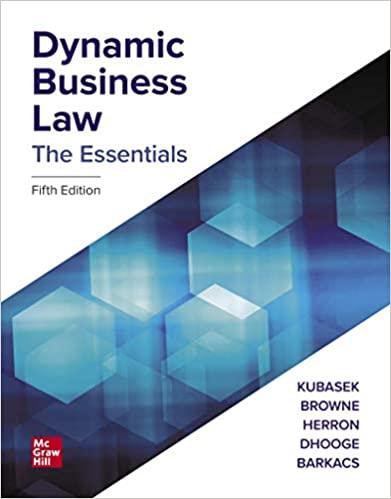In 2014, Julie Gerstenecker, who was married to Adam Gerstenecker, had approximately $78,000 of student loan debt.
Question:
In 2014, Julie Gerstenecker, who was married to Adam Gerstenecker, had approximately $78,000 of student loan debt. Hearing Julie lament about the interest on her loans, Adam’s mother, Janice Gerstenecker offered Julie an interest-free loan to pay off her student loan debt in return for monthly payments. In September 2014, Julie sent Janice an email with the details of Julie’s student loan debt. The next day, Janice mailed checks covering the full amount of Julie’s debt to the Department of Education Federal Loan Servicing and Sallie Mae. The agreement was not put into writing. In early 2015, Julie and Adam were going through divorce proceedings. An email exchange between Julie and Adam discussing divorce terms indicated that Julie’s monthly payments to Janice would be reduced from $700 per month to $500 per month. In December 2015, after a year of non-payments, Janice sued Julie for breach of contract. In the trial, Janice testified that she had received four checks from Julie before the payments had ceased. Julie testified that she had no recollection or explanation as to why she had sent those checks to Janice. Ultimately, Julie argued that there was no contract between them because “[t]here is no tangible evidence supporting the assertion that Julie intended to agree to pay [Janice] back.” What are the two ways an offeree can manifest intent to enter into the contract? Although there was no explicitly signed contract, what actions by Julie indicate that there was an agreement of the offer? How do you think the court ultimately resolved this case?
Step by Step Answer:

Dynamic Business Law The Essentials
ISBN: 9781260253382
5th Edition
Authors: Nancy Kubasek, M. Neil Browne, Daniel Herron, Lucien Dhooge, Linda Barkacs





